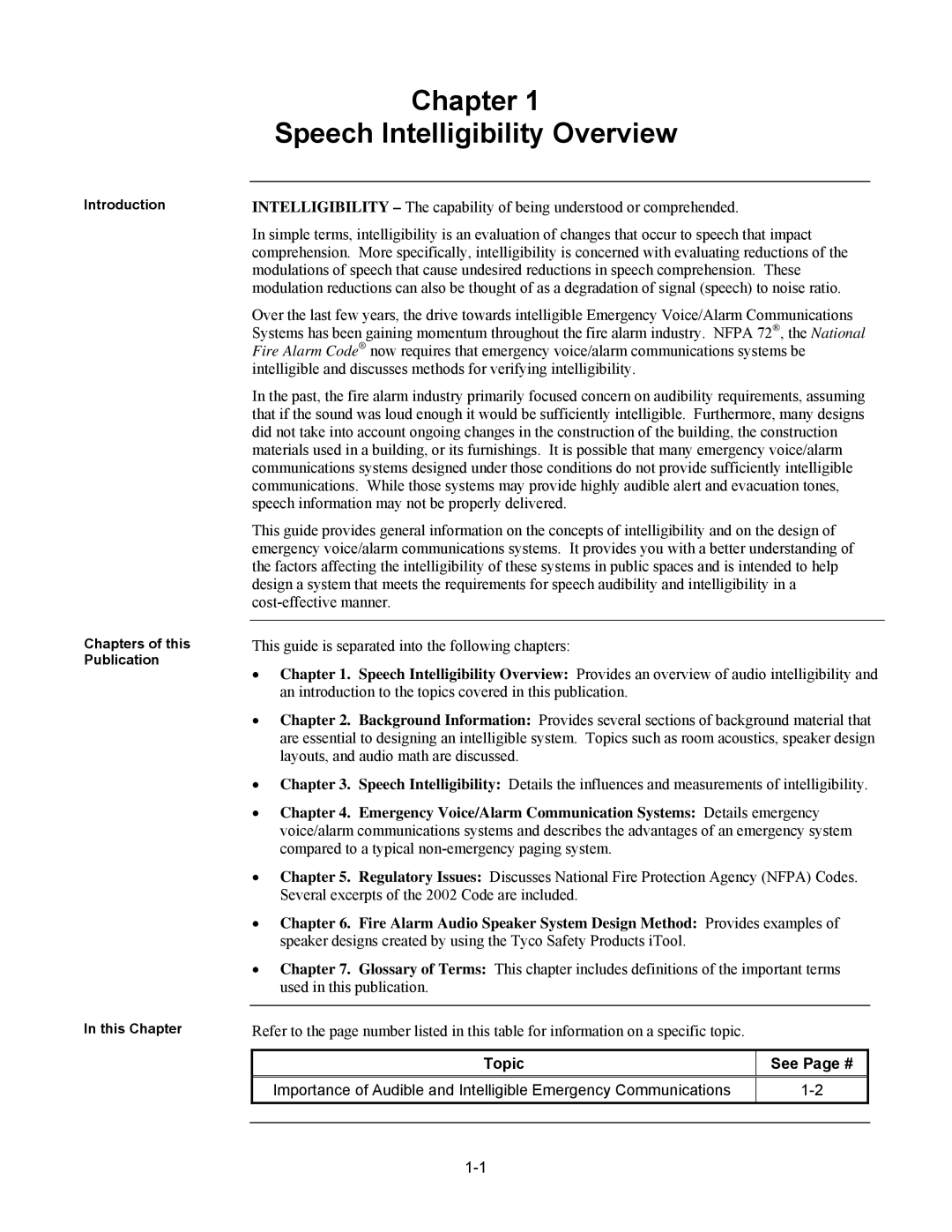
Introduction
Chapters of this Publication
In this Chapter
Chapter 1
Speech Intelligibility Overview
INTELLIGIBILITY – The capability of being understood or comprehended.
In simple terms, intelligibility is an evaluation of changes that occur to speech that impact comprehension. More specifically, intelligibility is concerned with evaluating reductions of the modulations of speech that cause undesired reductions in speech comprehension. These modulation reductions can also be thought of as a degradation of signal (speech) to noise ratio.
Over the last few years, the drive towards intelligible Emergency Voice/Alarm Communications Systems has been gaining momentum throughout the fire alarm industry. NFPA 72®, the National Fire Alarm Code® now requires that emergency voice/alarm communications systems be intelligible and discusses methods for verifying intelligibility.
In the past, the fire alarm industry primarily focused concern on audibility requirements, assuming that if the sound was loud enough it would be sufficiently intelligible. Furthermore, many designs did not take into account ongoing changes in the construction of the building, the construction materials used in a building, or its furnishings. It is possible that many emergency voice/alarm communications systems designed under those conditions do not provide sufficiently intelligible communications. While those systems may provide highly audible alert and evacuation tones, speech information may not be properly delivered.
This guide provides general information on the concepts of intelligibility and on the design of emergency voice/alarm communications systems. It provides you with a better understanding of the factors affecting the intelligibility of these systems in public spaces and is intended to help design a system that meets the requirements for speech audibility and intelligibility in a
This guide is separated into the following chapters:
•Chapter 1. Speech Intelligibility Overview: Provides an overview of audio intelligibility and an introduction to the topics covered in this publication.
•Chapter 2. Background Information: Provides several sections of background material that are essential to designing an intelligible system. Topics such as room acoustics, speaker design layouts, and audio math are discussed.
•Chapter 3. Speech Intelligibility: Details the influences and measurements of intelligibility.
•Chapter 4. Emergency Voice/Alarm Communication Systems: Details emergency voice/alarm communications systems and describes the advantages of an emergency system compared to a typical
•Chapter 5. Regulatory Issues: Discusses National Fire Protection Agency (NFPA) Codes. Several excerpts of the 2002 Code are included.
•Chapter 6. Fire Alarm Audio Speaker System Design Method: Provides examples of speaker designs created by using the Tyco Safety Products iTool.
•Chapter 7. Glossary of Terms: This chapter includes definitions of the important terms used in this publication.
Refer to the page number listed in this table for information on a specific topic.
Topic | See Page # |
Importance of Audible and Intelligible Emergency Communications |
